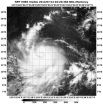(Press-News.org) (PHILADELPHIA) – Pulmonary inflammation can cause shallow breathing and the lungs to become brittle in patients who experience multiple blood transfusions, sepsis, lung surgery and acute lung trauma. This complication can leave patients on ventilators, which can further traumatize the lungs, and often results in a mortality rate of 30 to 40 percent. To date, no medication has been successful at preventing or mitigating the damage caused by lung inflammation. Now, a multidisciplinary research team led by David Eckmann, MD, PhD, Horatio C. Wood Professor of Anesthesiology and Critical Care at the Perelman School of Medicine at the University of Pennsylvania and professor of Bioengineering in Penn's School of Engineering and Applied Science, has found that when delivered by a microscopic transporter called a nanocarrier, steroids can access the hard-to-reach lung endothelial cells that need it most and are successful at preventing inflammation in mice. This proof-of-concept study is published in PLOS One.
"This is a treatment that benefits entirely from targeted delivery or it tends not to have any significant therapeutic benefit," says Eckmann.
"That's part of the challenge with this disorder: we have been uncertain to this point whether it was the medication or its delivery mechanism that wasn't working. Our results in mouse models show beyond a shadow of a doubt that the drugs can be effective, we just needed to improve delivery," says Eckmann. Acute lung injury develops as a result of direct or indirect trauma to the lungs. It compromises the hard-to-reach pores that enable gas exchange between the epithelial and endothelial barriers in the lungs.
During the past year the team was awarded an National Science Foundation and two NIH grants to design nanocarriers for targeted drug delivery through a combination of computer modeling and laboratory experiments. This study represents the first of their experimental results.
The team used a nanogel, a specialized nanocarrier, for drug delivery made up of two molecules—dextran (a sugar) and lysozyme (a protein)—which mesh into a spaghetti-like ball that can fill with water to expand and contract. A specific lung-targeting molecule is attached to the carrier's surface and the steriod, dexamethasone, an anti-inflammatory, is loaded into the nanogel, which then binds to lung endothelial cells lining the inside wall of the blood vessels where it rapidly delivers the drug.
"This molecule on the surface of the nanocarrier has specialized preference for the lung to enhance localized and targeted drug delivery," says Eckmann.
The team next plans to try the therapy in a cohort of patients at the Hospital of the University of Pennsylvania.
INFORMATION:
Additional Penn authors include Russell J. Composto, PhD, professor of Materials Science and Engineering in Penn's School of Engineering and Applied Science; Vladimir Muzykantov, MD, PhD, professor of Pharmacology; senior research investigator Vladimir Shuvaev, PhD, and postdoctoral fellows M. Carme Coll Ferrer, PhD, and Blaine Zern, PhD.
This work is supported by NIH grant R01 EB006818.
Penn Medicine is one of the world's leading academic medical centers, dedicated to the related missions of medical education, biomedical research, and excellence in patient care. Penn Medicine consists of the Raymond and Ruth Perelman School of Medicine at the University of Pennsylvania (founded in 1765 as the nation's first medical school) and the University of Pennsylvania Health System, which together form a $4.3 billion enterprise.
The Perelman School of Medicine has been ranked among the top five medical schools in the United States for the past 17 years, according to U.S. News & World Report's survey of research-oriented medical schools. The School is consistently among the nation's top recipients of funding from the National Institutes of Health, with $392 million awarded in the 2013 fiscal year.
The University of Pennsylvania Health System's patient care facilities include: The Hospital of the University of Pennsylvania -- recognized as one of the nation's top "Honor Roll" hospitals by U.S. News & World Report; Penn Presbyterian Medical Center; Chester County Hospital; Penn Wissahickon Hospice; and Pennsylvania Hospital -- the nation's first hospital, founded in 1751. Additional affiliated inpatient care facilities and services throughout the Philadelphia region include Chestnut Hill Hospital and Good Shepherd Penn Partners, a partnership between Good Shepherd Rehabilitation Network and Penn Medicine.
Penn Medicine is committed to improving lives and health through a variety of community-based programs and activities. In fiscal year 2013, Penn Medicine provided $814 million to benefit our community.
Penn researchers successfully alleviate pulmonary inflammation with targeted drug delivery
Proof-of-concept study showed nanocarriers can aid drug delivery in mice
2014-07-14
ELSE PRESS RELEASES FROM THIS DATE:
Babies born in Canada to immigrant mothers have lower risk of cerebral palsy: Study
2014-07-14
TORONTO, July 14, 2014—Babies born to mothers who immigrated to Ontario from other countries have significantly lower rates of cerebral palsy than those of Canadian-born mothers, especially those from the Caribbean and East Asia, new research has found.
"Predicting who is at highest risk of having a child with CP remains an international priority," said lead author Dr. Joel Ray, who notes that CP rates have not declined much over the last decade.
CP is the most common motor disability in childhood and appears by the age of four. The underlying injury to the brain with ...
Avoiding abuse: Empathy, realistic expectations key to raising a child with disabilities
2014-07-14
ST. LOUIS – Children with developmental disabilities are at higher risk for abuse and neglect from parents than children developing at a typical rate. So far, there was little evidence of specific parental behaviors that were associated with the risk, but a SLU study finds inappropriate expectations and lack of empathy play a significant role in triggering the risk.
Debra Zand, Ph.D., associate professor of pediatrics at Saint Louis University and the principal investigator of the project, conducted the study in a small group of parents in St. Louis with 67 participants. ...
Rethinking fish farming to offset its public health and environmental risks
2014-07-14
As government agencies recommend greater consumption of seafood for its health benefits, a new analysis led by researchers from the Johns Hopkins Center for a Livable Future urges medical and public health professionals to consider the environmental and health impact of seafood sourcing, particularly aquaculture, or the farming of fish, shellfish and crustaceans. The paper appears in the July 2014 issue of the Journal of Current Environmental Health Reports.
Nearly half of all seafood consumed around the world comes from fish farms. Increasing seafood consumption has ...
Expert collaboration is the key to sustainable fish and shellfish farming
2014-07-14
Getting more people to eat seafood because it's a healthier option will need careful planning to ensure that the expansion of the aquaculture sector does not pose a risk to the environment. Business leaders in the sector should not aim only for profits, but rather embrace the principles of the One Health model that sees the health of humans being interwoven with that of animals and the environment. The model brings together experts from various fields to develop sustainable operations that ensure adequate human nutrition, and healthy environments, say Juan Gormaz of the ...
Suomi NPP satellite sees Typhoon Rammasun approaching Philippines
2014-07-14
NASA-NOAA's Suomi NPP Satellite passed over Typhoon Rammasun early on July 14 and captured a visible image of the storm that showed large bands of thunderstorms wrapping into the center as it approached the central Philippines.
When NASA-NOAA's Suomi NPP satellite passed over Rammasun on July 14 at 04:20 UTC, the Visible Infrared Imaging Radiometer Suite (VIIRS) instrument aboard took a visible image of the storm. The VIIRS instrument showed large, thick bands of powerful thunderstorms wrapping into the low-level center of circulation. The largest band extended from the ...
MD Anderson researchers discover new route for ovarian cancer spread
2014-07-14
Circulating tumor cells spread ovarian cancer through the bloodstream, homing in on a sheath of abdominal fatty tissue where it can grow and metastasize to other organs, scientists at The University of Texas MD Anderson Cancer Center report in Cancer Cell.
"This completely new way of thinking about ovarian cancer metastasis provides new potential avenues to predict and prevent recurrence or metastasis," said senior author Anil Sood, M.D., professor of Gynecologic Oncology and Reproductive Medicine and Cancer Biology.
The researchers found the circulating tumor cells ...
NASA adds up Tropical Storm Neoguri's deluge from space
2014-07-14
The once-powerful Super Typhoon Neoguri weakened to a tropical storm when it dropped heavy rainfall over southern Japan during the week of July 7, 2014. NASA and the Japan Aerospace Exploration Agency's Tropical Rainfall Measuring Mission or TRMM satellite measured that soaking from its orbit in space and data was used to create a maps showing the rainfall totals.
Heavy rainfall from Neoguri fell on land that was already soaked earlier this month by a slow moving seasonal frontal system. Neoguri was reported to have caused up to five deaths and 50 injuries in Japan.
Rainfall ...
Say 'no' to interruptions, 'yes' to better work
2014-07-14
Modern office workers are expected to multitask regularly, often juggling multiple projects and priorities over the course of a day. Studies have shown that the typical employee in an office environment is interrupted up to six times per hour, but how does that impact the finished product? New research published in Human Factors evaluates how ongoing interruptions can negatively affect the quality of work.
"People don't realize how disruptive interruptions can be," said Cyrus Foroughi, coauthor of "Do Interruptions Affect Quality of Work?" and a PhD candidate at George ...
Sierra Leone samples: Ebola evidence in West Africa in 2006
2014-07-14
Analysis of clinical samples from suspected Lassa fever cases in Sierra Leone showed that about two-thirds of the patients had been exposed to other emerging diseases, and nearly nine percent tested positive for Ebola virus. The study, published in this month's edition of Emerging Infectious Diseases, demonstrates that Ebola virus has been circulating in the region since at least 2006—well before the current outbreak.
First author Randal J. Schoepp, Ph.D., recently returned from Liberia and Sierra Leone, where he spent six weeks helping to set up an Ebola testing laboratory ...
Scientists deepen genetic understanding of eosinophilic esophagitis
2014-07-14
WHAT:
Scientists funded by the National Institutes of Health (NIH) have identified genetic markers associated with eosinophilic esophagitis (EoE), an inflammatory disease characterized by high levels of immune cells called eosinophils in the esophagus. Their findings suggest that several genes are involved in the development of EoE, which can cause difficulty eating and often is associated with food allergies. The findings also may help explain why the disease specifically affects the esophagus. The work was supported in part by the Consortium of Food Allergy Research, ...
LAST 30 PRESS RELEASES:
Interaction of climate change and human activity and its impact on plant diversity in Qinghai-Tibet plateau
From addressing uncertainty to national strategy: an interpretation of Professor Lim Siong Guan’s views
Clinical trials on AI language model use in digestive healthcare
Scientists improve robotic visual–inertial trajectory localization accuracy using cross-modal interaction and selection techniques
Correlation between cancer cachexia and immune-related adverse events in HCC
Human adipose tissue: a new source for functional organoids
Metro lines double as freight highways during off-peak hours, Beijing study shows
Biomedical functions and applications of nanomaterials in tumor diagnosis and treatment: perspectives from ophthalmic oncology
3D imaging unveils how passivation improves perovskite solar cell performance
Enriching framework Al sites in 8-membered rings of Cu-SSZ-39 zeolite to enhance low-temperature ammonia selective catalytic reduction performance
AI-powered RNA drug development: a new frontier in therapeutics
Decoupling the HOR enhancement on PtRu: Dynamically matching interfacial water to reaction coordinates
Sulfur isn’t poisonous when it synergistically acts with phosphine in olefins hydroformylation
URI researchers uncover molecular mechanisms behind speciation in corals
Chitin based carbon aerogel offers a cleaner way to store thermal energy
Tracing hidden sources of nitrate pollution in rapidly changing rural urban landscapes
Viruses on plastic pollution may quietly accelerate the spread of antibiotic resistance
Three UH Rainbow Babies & Children’s faculty elected to prestigious American Pediatric Society
Tunnel resilience models unveiled to aid post-earthquake recovery
Satellite communication systems: the future of 5G/6G connectivity
Space computing power networks: a new frontier for satellite technologies
Experiments advance potential of protein that makes hydrogen sulfide as a therapeutic target for Alzheimer’s disease
Examining private equity’s role in fertility care
Current Molecular Pharmacology achieves a landmark: real-time CiteScore advances to 7.2
Skeletal muscle epigenetic clocks developed using postmortem tissue from an Asian population
Estimating unemployment rates with social media data
Climate policies can backfire by eroding “green” values, study finds
Too much screen time too soon? A*STAR study links infant screen exposure to brain changes and teen anxiety
Global psychiatry mourns Professor Dan Stein, visionary who transformed mental health science across Africa and beyond
KIST develops eco-friendly palladium recovery technology to safeguard resource security
[Press-News.org] Penn researchers successfully alleviate pulmonary inflammation with targeted drug deliveryProof-of-concept study showed nanocarriers can aid drug delivery in mice





